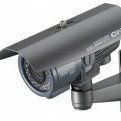Leaderboard
Popular Content
Showing content with the highest reputation since 12/18/2018 in all areas
-
3 pointsI am starting this thread to capture a bunch of information in one spot to assist those with "bricked" cameras due failed firmware upgrades. I bought my first Dahua IP camera just a couple weeks ago. I was impressed & pretty happy with it, but upon reading about new capabilities in newer firmware, I decided to upgrade it. Then like many others on here, I lost access to the Web GUI and the camera was no longer functioning. I spent the last two weeks getting to know everything about these cameras and this thread will capture all this information. It will take me several weeks to document all the information so please be patient. There are a variety of problems that I will try my best to explain and share the possible solutions. I have gotten pretty comfortable with these cameras and have purposely bricked them to various degrees of severity just to validate the recovery process. Most people "brick" their cameras trying to upgrade the firmware. This is not a serious issue and it can be corrected very easily. The camera runs an upgrade service on port 3800. The configTool always shows a default port of 37777 but this is not an issue as it can do the upgrade on port 3800 anyway. Change your port to 3800 and use a firmware file lsted below and you are back in business. I will keep updating this post as I get more time to write all the details around recovery. I will also post links to over 40+ firmware files that and which cameras they will work with. It will take me a bit of time to capture all this information, so please be patient. BRICKED CAMERA? How can you tell? There are several types of "BRICKED" camera conditions and they have varying levels of severity and also varying levels of complexity for recovery. Most are simple and caused by bad firmware uploads. The worst will require a full rebuild of the partitions which load the kernel, software and all other data. 1. The first step in identifying the severity of your issue is to determine what still working on your camera. In order to do that, lets remove as many variables as possible to the troubleshooting process. If possible, connect the camera ethernet and PC ethernet on it's own switch and make sure that no vlan tagging is enabled on the switch. Next, you need to figure out if the IP address is still reacheable. Ping the last known ip address. The default address for most cameras is 192.168.1.108. If you don't know it you can use the arp/ping method to configure which adds as startic arp entry to a new ip address. (This feature is enabled on the camera by default) 2. Once you have a pingable IP, you need to know what services are still active on the camera. This can be done with a simple port scanner. I have added a link to below in tools. 3. Run the port scanner and record which ports are still open. In many cases port 23 and port 3800 will still be open. If this is your situation, it is a very simple fix. If no ports are open, you will need to do a full image load which is more complex. The typical ports that you would see are: 23 - Telnet access 80 - Web User interface 443 - SSL 554 - Real time streaming port 3800 - Upgrade Deamon 5000 - UPnP 37777 - TCP Video streaming 37778 - UDP Video Streaming 42323 - Real time remote runner Plus a whole bunch more of UDP ports and more TCP ports REPAIR WITH PORT 3800 Download a step by step guide (DAHUA IP Camera Recovery v1.0.pdf) with screen prints @ http://tinyurl.com/lbl3up7 1A. If port 3800 is open you can connect with the Dahua Config tool (link below in tools). I tdefault to port 37777 but change it to 3800 as this port where the upgrade daemon is listening. Port 37777 is a redirect but it won't work if your firmware has failed. Launch the config tool and click on login button. Type the IP address , username and password then port 3800. Open a know working firmware file and upload to the camera. 1B. If port 3800 is not open, go to the next step to enable port 3800. 2. If you have telnet access, you can login with putty. Link to putty below in tools. The default Web UI password is admin / admin. In older firmware the telnet account is root / vizxv In newer firmware the telnet account is admin / 7ujMko0+"web UI password" ---> 7ujmko0admin Once connected you can execute a ps command to see running processes. /usr/sbin/upgraded process is what listens on port 3800 for the firmware binary file. There is also another copy in /var/tmp/ A useful tip for watching the upgrade process is to kill the "upgraded" process that is running and re-launch it in the foreground to watch the upgrade. ~#>ps 625 root 0:00 [mtdblock3] 630 root 0:00 [mtdblock4] 635 root 0:00 [mtdblock5] 772 root 0:00 [ubi_bgt7d] 776 root 0:00 [ubifs_bgt7_0] 790 root 0:00 /sbin/telnetd 798 root 0:00 [OSA_796_1] 860 root 0:00 syshelper elper 60 861 root 0:00 /usr/sbin/upgraded 869 root 0:00 [dsplogd] 870 root 0:00 [encode_guard] 889 root 0:00 [flush-ubifs_6_0] 923 root 3:29 ./VideoDaemon AEWB AF TVOUT ~#> kill -9 861 ~#> /usr/sbin/upgraded [OSA-APP] OSA Build on Apr 19 2014 at 09:55:50. [OSA-APP] SVN NUM: 1609. [libpdi] libpdi.so Build on Apr 19 2014 at 10:06:34. [libpdi] SVN NUM: 13790. [libpdi] Flashtype = 4,patSize = 100000,rwSize = 800,ersSize = 20000 22:52:46|[crypt] crypt_open ok! Name: upgraded, bulid date: Apr 19 2014 09:17:58, svn: 255 [libpdi] >-------getSystemInfo-------> Fail to get env authcode! [libpdi] Get authcode error @@@@ buf = PZC4MU056W00XXX 22:52:52|[pdc] WARN (MISC_ioctl|493): Get SdCard cfg failed ! [libpdi] deviceType: IPC-HFW4300S-V2 [libpdi] processor: A5S88 [libpdi] hardwareVersion: 1.00 [libpdi] appAutoStart: 1 [libpdi] serialNumber: PZC4MU056W00XXX [libpdi] processorCount: 1 [libpdi] deviceClass: IPC [libpdi] noPtz: 1 [libpdi] noSdCard: 1 [libpdi] bandWidth: 48 [libpdi] <-------getSystemInfo-------< UPGRADED_MSG: Can't Open /mnt/mtd/Config/passwd UPGRADED_MSG: Login success! UPGRADED_MSG: Kill 976 successful [libpdi] Read: blkIndex: 1,pageIndex: 0,byteIndex: 0 ,fLag: ff [libpdi] Write: blkIndex: 1,pageIndex: 0,byteIndex: 0 ,fLag: 0 UPGRADED_MSG: reset_watchdog UPGRADED_MSG: Receive A4(alarm) UPGRADED_MSG: reset_watchdog UPGRADED_MSG: Receive A1(alive package) UPGRADED_MSG: reset_watchdog UPGRADED_MSG: Received : 29868252, FileSize : 29868252 UPGRADED_MSG: Download Complete UPGRADED_MSG: DoDownLoad success! UPGRADED_MSG: Flash init success UPGRADED_MSG: hwid file success! Fail to get env native! UPGRADED_ERR: LINE: 1074: invalid file: Install.lua UPGRADED_MSG: zip file total size: 40900220 [libpdi] >-------getSystemInfo-------> Fail to get env authcode! [libpdi] Get authcode error @@@@ buf = PZC4MU056W00XXX 22:53:10|[pdc] WARN (MISC_ioctl|493): Get SdCard cfg failed ! [libpdi] deviceType: IPC-HFW4300S-V2 [libpdi] processor: A5S88 [libpdi] hardwareVersion: 1.00 [libpdi] appAutoStart: 1 [libpdi] serialNumber: PZC4MU056W00XXX [libpdi] processorCount: 1 [libpdi] deviceClass: IPC [libpdi] noPtz: 1 [libpdi] noSdCard: 1 [libpdi] bandWidth: 48 [libpdi] <-------getSystemInfo-------< UPGRADED_MSG: packet.name: SD6XXX, board.name: IPC-HFW4300S-V2 UPGRADED_MSG: packet.hardver: , board.hardver: UPGRADED_MSG: packet.name: IPC-HX3XXX, board.name: IPC-HFW4300S-V2 UPGRADED_MSG: packet.hardver: , board.hardver: UPGRADED_MSG: Verify version success Header CRC Checking ... OK Image Name: kernel.img Image Type: kernel.img (gzip compressed) Data Size: 2546876 B, Bytes = 2.43 MB Load Address: 0XC80000 Data CRC Checking ... OK Programing start at: 0XC80000 [libpdi] write update Flag [libpdi] Read: blkIndex: 0,pageIndex: 0,byteIndex: 0 ,fLag: ff [libpdi] Write: blkIndex: 0,pageIndex: 0,byteIndex: 0 ,fLag: 55 [libpdi] Flash_createPartionTab:6 [libpdi] Erase Partion: 6 [libpdi] FlashErase: addr= 0x0xc80000,blkNum:44, blkSize:0x20000,len:0x580000 <5>UBIFS: un-mount UBI device 2, volume 0 <5>UBIFS: un-mount UBI device 4, volume 0 Upgrade : Complete Total 6%... Header CRC Checking ... OK Image Name: partition-x.cramfs.img Image Type: partition-x.cramfs.img (gzip compressed) Data Size: 4160 B, Bytes = 0.00 MB Load Address: 0X500000 Data CRC Checking ... OK Programing start at: 0X500000 [libpdi] Flash_createPartionTab:3 [libpdi] Erase Partion: 3 [libpdi] FlashErase: addr= 0x0x500000,blkNum:8, blkSize:0x20000,len:0x100000 Upgrade : Complete Total 6%... Header CRC Checking ... OK Image Name: romfs-x.ubifs.img Image Type: romfs-x.ubifs.img (gzip compressed) Data Size: 7340096 B, Bytes = 7.00 MB Load Address: 0X1200000 Data CRC Checking ... OK Programing start at: 0X1200000 [libpdi] Flash_createPartionTab:7 [libpdi] Erase Partion: 7 [libpdi] FlashErase: addr= 0x0x1200000,blkNum:64, blkSize:0x20000,len:0x800000 Upgrade : Complete Total 24%... Header CRC Checking ... OK Image Name: pd-x.ubifs.img Image Type: pd-x.ubifs.img (gzip compressed) Data Size: 1966144 B, Bytes = 1.88 MB Load Address: 0X940000 Data CRC Checking ... OK Programing start at: 0X940000 [libpdi] Flash_createPartionTab:5 [libpdi] Erase Partion: 5 [libpdi] FlashErase: addr= 0x0x940000,blkNum:26, blkSize:0x20000,len:0x340000 Upgrade : Complete Total 28%... Header CRC Checking ... OK Image Name: user-x.ubifs.img Image Type: user-x.ubifs.img (gzip compressed) Data Size: 21233728 B, Bytes = 20.25 MB Load Address: 0X2200000 Data CRC Checking ... OK Programing start at: 0X2200000 [libpdi] Flash_createPartionTab:9 [libpdi] Erase Partion: 9 [libpdi] FlashErase: addr= 0x0x2200000,blkNum:204, blkSize:0x20000,len:0x1980000 Upgrade : Complete Total 80%... Header CRC Checking ... OK Image Name: custom-x.ubifs.img Image Type: custom-x.ubifs.img (gzip compressed) Data Size: 1966144 B, Bytes = 1.88 MB Load Address: 0X600000 Data CRC Checking ... OK Programing start at: 0X600000 [libpdi] Flash_createPartionTab:4 [libpdi] Erase Partion: 4 [libpdi] FlashErase: addr= 0x0x600000,blkNum:26, blkSize:0x20000,len:0x340000 Upgrade : Complete Total 85%... Header CRC Checking ... OK Image Name: web-x.ubifs.img Image Type: web-x.ubifs.img (gzip compressed) Data Size: 5505088 B, Bytes = 5.25 MB Load Address: 0X1A00000 Data CRC Checking ... OK Programing start at: 0X1A00000 [libpdi] Flash_createPartionTab:8 [libpdi] Erase Partion: 8 [libpdi] FlashErase: addr= 0x0x1a00000,blkNum:64, blkSize:0x20000,len:0x800000 Upgrade : Complete Total 99%... [libpdi] Read: blkIndex: 0,pageIndex: 1,byteIndex: 0 ,fLag: ff [libpdi] Write: blkIndex: 0,pageIndex: 1,byteIndex: 0 ,fLag: aa Upgrade : Complete Total 100%... UPGRADED_MSG: will reboot system [libpdi] rebootSystem: i will reboot [libpdi] Read: blkIndex: 1,pageIndex: 0,byteIndex: 0 ,fLag: ff [libpdi] Write: blkIndex: 1,pageIndex: 0,byteIndex: 0 ,fLag: 0 [libpdi] pdi:system will reboot!! Here you can see each partition being loaded wit the individual img files. I will write a quick how to on loading each one individually at a later time. If you chose a valid firmware file, you will be back in working order. If you still have problems, repeat with another firmware file till you have a valid file. The IPC-HFW4300S-V2 is not natively compatible with all other 4300S firmware. I am in the process of writing a how to that explains how to over come this issue. UNBRICK WITH UBOOT via SERIAL NOTE: This section is coming soon... I'm gathering all the images I need for various camera types OTHER USEFUL INFORMATION (to be sorted later) The firmware consists of several images that are loaded into various partitions in flash in a UBI file system. You can load each partition separately if needed. More on this later.... (I'll put a guide together on flashing and recovering partitions) Once you telnet into the camera, there are number of useful binaries in the user shell that can help correct and diagnose some of the problems people are experiencing. One of the helpful steps is to kill the /var/tmp/upgraded process and run it in the foreground so you can see what is going on and easily capture error messaged. The /var/tmp/upgraded process is what opens the port 3800 and allows you to connect to the camera with the config tool if your web services have failed. There is also another copy in usr/sbin/. Also, in there is a command to reset all the parameters back to factory defaults (username, password, ip address back to 192.168.1.108 etc.) This can be accomplished with /sbin/clearparam. Another issue that people run into is the constant reboot issue. This can be caused by a failed process. The main application which provides all the camera capabilities (web interface, streaming, etc.) is /usr/bin/sonia. This process is what makes most firmware different from version to version (sort of). There are also changes to the web partition which contains the web server pages that /usr/bin sonia hosts on port 80. The sonia process is invoked by a shell script in init.d and if the process is killed, the camera reboots after a few minutes. This has cause many people issues when trying to "unbrick" the camera since you only have a few minutes between reboots. To stop the reboots you can update the flash. There is a parameter called appauto that tells the camera to auto start /us/bin/sonia. If you want the camera to start and not invoke the shell script that launches sonia, you need to set appauto to 0. This will stop the camera from rebooting when sonia is not running. This cam be accomplished by running '/sbin/appauto 0'. To turn it back on, just run /sbin/appauto 1. This writes the boot parameter in flash that the kernel reads before starting the process. You can check the current status of the appauto bootparameter with 'cat /proc/dahua/bootpara' It will only show what the parameter was when you booted up, so if you changes it you need to reboot to see the change in /proc/dahua/bootpara. Realtime streaming URL - rtsp://192.168.1.108/cam/realmonitor?channel=1&subtype=0&proto=Onvif You can change the subtype to 1 for the secondary stream also you can add user:password@ in front of the IP address if you have the permissions set requiring it. You can use the HTTP API to configure some parameters that are not yet in the web UI. For instance, another member discovered he could enable NFS through the web UI in addition to the local SD card. This config is not possible through the web interface as you need to pick one or the other. These documents details the API of Dahua video products (links provided to some of the versions below). Programmers or users can access and configure Dahua video products through the API. Every setting of the camera is available through the API whereas only a small number are available through the WEB interface. The document with version 1.10 is available with firmware version 2.0 and above. This document with version 1.20, 1.21, 1.22, 1.23,1.24,1,25,1,26,1,27,1,28 is available with firmware 2.210 and above.This document with version 1. 29 ,1.30, 1.31, 1.32, 1.33, 1.34, 1.35, 1.36 is available with firmware 2.210 and above.This document with version 1.37 is available with firmware 2.212, 2.4 and above. I have also done a bit of testing around the tftp process that is invoked in u-boot that looks for upgrade_info_7db780a713a4.txt and failed.txt. I think with a little more work, I'll figure out if there is a recovery method using tftp without serial access. This would be necessary if you lose telnet access and need to rebuild the kernel partition that hosts telnetd. Tools DAHUA IP Camera Recovery v1.0.pdf....................... http://tinyurl.com/lbl3up7 Port Scanner .................................................. http://tinyurl.com/q53pojg Putty .............................................................. http://tinyurl.com/lvbbmsq Tftp Server ..................................................... http://tinyurl.com/m46wnhe Dahua Docs & Tools DAHUA_HTTP_API 1.0 .pdf ................................................ http://tinyurl.com/lb43lga DAHUA_HTTP_API_1.23.pdf ................................................ http://tinyurl.com/lrwye3k DAHUA_HTTP_API_FOR_IPC 1.28.pdf ........................................ http://tinyurl.com/kskrcay DAHUA_HTTP_API_FOR_IPC&SD-V1.36.pdf .................................... http://tinyurl.com/mooccf9 DAHUA_HTTP_API_FOR_IPC&SD-V1.37.pdf .................................... http://tinyurl.com/kvyddfp DAHUA_HTTP_API_FOR_DVR_V1.29.pdf ....................................... http://tinyurl.com/klc72tr General_ConfigTool_Eng_V1.0.5.R.120428.zip ........................ http://tinyurl.com/mwlzbb3 General_ConfigTool_Eng_V1.06.1.T.120807.zip ........................ http://tinyurl.com/leudphu General_ConfigTool_Eng_V1.07.2.R.130304.zip ....................... http://tinyurl.com/obs5ud7 General_ConfigTool_Eng_V1.07.3.R.130701.zip ....................... http://tinyurl.com/o6p628f <---- Use this one General_ConfigTool_Eng_V2.00.0.R.140410.zip ........................ http://tinyurl.com/nbqtgev Firmware Files Firmware files are grouped by camera type and video signal (NTSC --> Eng_N / PAL --> Eng_P / or BOTH --> Eng_NP) Files are ordered by version number with the latest Firmware in blue. Files with DH_ prefix are DAHUA direct firmware files and those with General_ prefix are general release for OEM cameras but I've had good luck with both. DH_IPC-HX1100_Eng_NP_V2.210.0000.3.R.20140416.bin .................................................. http://tinyurl.com/m2jf3qv General_IPC-HX3(2)XXX_Eng_N_V2.210.0001.0.R.20130517.bin ............................................... http://tinyurl.com/q98zg9x General_IPC-HX3(2)XXX_Eng_P_V2.210.0001.0.R.20130517.bin ................................................ http://tinyurl.com/nekapn3 General_IPC-HX3(2)XXX_Eng_NP_V2.210.0001.0.R.20130517.bin ............................................. http://tinyurl.com/p59ym6z General_IPC-HX3(2)XXX_Eng_P_V2.211.0000.0.R.20130726.bin ................................................ http://tinyurl.com/my54r9z General_IPC-HX3(2)XXX_Eng_N_V2.212.0000.0.R.20131206.bin ............................................... http://tinyurl.com/lrvtm2z General_IPC-HX3(2)XXX_Eng_P_V2.212.0000.0.R.20131206.bin ................................................ http://tinyurl.com/n9rv23n General_IPC-HX3(2)XXX_Eng_N_V2.212.0001.0.R.20131224.bin ............................................... http://tinyurl.com/l5kg2d9 General_IPC-HX3(2)XXX_Eng_P_V2.212.0001.0.R.20131224.bin ................................................ http://tinyurl.com/q6c2gox DH_IPC-HX3(2)XXX_Eng_NP_8M_V2.212.0000.4.R.20140307.bin ............................................... http://tinyurl.com/mnzx33h DH_IPC-HX3(2)XXX_Eng_NP_8M_V2.212.0000.5.R.20140326.bin ............................................... http://tinyurl.com/ke285w5 DH_IPC-HX3(2)XXX_Eng_NP_8M_V2.212.0000.6.R.20140419.bin ............................................... http://tinyurl.com/mllzcox General_IPC-HX3(2)XXX_Eng_P_V2.420.0000.0.R.20140414.bin ................................................ http://tinyurl.com/nftaogy DH_IPC-HX3(2)XXX_Eng_N_V2.420.0000.0.R.20140414.bin .................................................... http://tinyurl.com/ma5q64d General_IPC-HX5(4)XXX_Eng_P_V2.210.0000.2.R.20130821.bin ................................................. http://tinyurl.com/pdcdmdk General_IPC-HX5(4)XXX_Eng_N_V2.210.0000.4.R.20130911.bin ........................................................ http://tinyurl.com/pdoxjzj General_IPC-HX5(4)XXX_Eng_P_V2.210.0000.9.R.20131217.bin ........................................................ http://tinyurl.com/p3g4t54 General_IPC-HX5(4)XXX_Eng_N_V2.210.0000.10.R.20140111.bin ...................................................... http://tinyurl.com/mnjpd79 General_IPC-HX5(4)XXX_Eng_P_V2.210.0000.12.R.20140225.bin ...................................................... http://tinyurl.com/nssnph6 DH_IPC-HX5(4)XXX_Eng_NP_V2.210.0000.12.R.20140225.bin ..................................................... http://tinyurl.com/lcjr8xv DH_IPC-HX5(4)XXX_Eng_NP_V2.210.0000.16.R.20140421.bin ..................................................... http://tinyurl.com/k67gu9u DH_IPC-HX5(4)XXX_Eng_NP_V2.210.0000.18.R.20140429.bin .................................................... http://tinyurl.com/n779scx General_IPC-HX5(4)XXX_Eng_N_V2.210.0000.21.R.20140613.bin ...................................................... http://tinyurl.com/qd2thhe General_IPC-HX5(4)XXX_Eng_P_V2.210.0000.21.R.20140613.bin ...................................................... http://tinyurl.com/p8q75b4 General_IPC-HX5(4)XXX_Eng_N_V2.400.0000.0.R.20131231.bin ........................................................ http://tinyurl.com/kmd7hu9 DH_IPC-HX5(4)XXX_Eng_N_Stream3_V2.420.0000.0.R.20140419.bin .................................................. http://tinyurl.com/mb75g2n DH_IPC-HX5(4)XXX_Eng_P_Stream3_V2.420.0002.0.R.20140621.bin ............................................ http://tinyurl.com/laj29k5 General_IPC-HX5(4)XXX_Eng_N_Stream3_V2.420.0000.0.R.20140419.bin ......................................... http://tinyurl.com/mzw85fz General_IPC-HX5(4)XXX_Eng_P_Stream3_V2.420.0000.0.R.20140419.bin ......................................... http://tinyurl.com/ov6krph General_IPC-HX5(4)XXX_Eng_P_Stream3_P2P_V2.420.0000.0.R.20140419.bin ................................. http://tinyurl.com/oxgblkq General_IPC-HX5(4)XXX_Eng_N_Stream3_V2.420.0002.0.R.20140621.bin ......................................... http://tinyurl.com/kejg3fv General_IPC-HX5(4)XXX_Eng_P_Stream3_V2.420.0002.0.R.20140621.bin ......................................... http://tinyurl.com/pfmevdu General_IPC-HX5(4)XXX_Eng_N_Stream3_V2.420.0003.0.R.20140930.bin ............................................... http://tinyurl.com/kchslos General_IPC-HX5(4)XXX_Eng_N_V2.420.0003.0.R.20140930.bin ........................................................ http://tinyurl.com/ok4f8fx General_IPC-HX5(4)XXX_Eng_N_Stream3_V2.420.0005.0.R.20141205.bin .............................................. http://tinyurl.com/qbrfg3k General_IPC-HX5(4)XXX_Eng_P_Stream3_V2.420.0005.0.R.20141205.bin ......................................... http://tinyurl.com/ot99vgw DH_IPC-HX8XXX_Eng_NP_V2.400.0000.2.R.20140506.bin .......................................................... http://tinyurl.com/lbar98x I will also post the bare metal img files when I get some time which contain the firmware and all the img files including the update.img that can be used for serial recovery. I have just started the process of uploading firmware... There are much more to come as well as many more camera models. Also if you have any you want to share please PM me what you have and where I can link them to this thread. Thanks to Euly for sharing firmware files! ___________________________________ IMPORTANT NOTE FOR IPC-HFW4300S-V2 CAMERAS The new camera appears to have differences (a few that I already found) that makes some of the general firmware incompatible with them. I have found a workaround, but it is complex. I will try to summarize it in a separate thread in the following weeks. I will also repackage the newest firmware files in versions that will work for the V2 cameras. Stay tuned! In the meantime, you can use General_IPC-HX5(4)XXX_Eng_N_V2.210.0000.21.R.20140613.bin or the PAL equivalent to recover your camera. Well, that's all I have time to share for now, but I'll do my best to put together a comprehensive guide to the inner workings of these cameras and a guide to unbrick in any failed software situation. Thanks and take care. Rob
-
3 pointsFantastic I have been looking for something to make me fall asleep for years .... your vids do the trick. You are giving so much bad information on at least 3 videos (sorry I started to nod off then) take your vid on dahua 4K mini ...... the audio on the back is not from cameras ..... it’s 1 local mic and 1 local speaker audio on ip systems is based in the camera data with audio enabled cameras. Every man man and his dog are doing cctv YouTube some do it excellent some very bad... yours are more a advert for out of date products ...... 3 weeks ago you did a video of a 1.3 mp camera ....... others did vids on 1.3mp years ago. Need a coffee now to wake up a little
-
3 pointsThat is not a 360 camera. And if you think that cheap crap is better than IP for $100 then your wrong. table top cameras are pointless. People need to think and reaserch what they need. table top cameras can not see who comes to your door.... Can't detected any damage to cars outside......can not see if damage don't to gardens of home exterior and that table top camera for $28. What about in home privacy. Why have a camera in your home living room that footage and sound goes off to a 3rd party could be 100s of strangers watching you in your own home day and night so is $28 home security .....NO. STAY AWAY FROM CHEAP GEEK CRAP
-
2 pointsI've wanted to make this list for a while, and hopefully it will help answer some simple questions or guide newcomers on their IP video quest. Feel free to add, change, or refine this! Most Popular Camera Manufactures (on this forum): ACTi (http://www.acti.com) - Midrange camera - good price - free software. Avtech (http://www.avtech.com.tw) - Has good 'push' support for events to mobile devices. Avigilon (http://www.avigilon.com) - Similar to Axis cost - must buy through dealer - good software/support. Axis (http://www.axis.com) - Popular choice - higher end cameras get expensive - easy to find online for sale - free + paid software options. Dahua (http://www.dahuasecurity.com) - Re-branded as Q-See - low price - difficult to find updates/support. Geovision (http://www.geovision.com.tw) - Midrange - have some LPR cameras. Grandstream (http://www.grandstream.com) - Low cost - have some unique features. Hikvision (http://www.hikvision.com) - Becoming more popular - re-branded as Lorex/Swann systems from Costco. IQinVision (http://www.iqeye.com) Midrange pricing. Mobotix (http://www.mobotix.com) - Cameras made in Germany - reliable but expensive - no moving parts to fail in their cameras. Vivotek (http://www.vivotek.com) - Midrange pricing. Other Camera Manufactures: Arecont (http://www.arecontvision.com/) Brickcom (http://www.brickcom.com/) Bosch (http://www.boschsecurity.us/en-us/ProductInformation/Cameras/NetworkCameras/) Canon (http://www.usa.canon.com/cusa/professional/products/security_video_solutions/network_cameras) GE (Unknown Website Address) Honeywell (http://www.honeywellvideo.com/products/cameras/ip/index.html) JVC (http://pro.jvc.com/prof/attributes/category.jsp?productId=PRO5.2) Panasonic (http://www.panasonic.com/business/psna/products-surveillance-monitoring/index.aspx) Pelco (http://www.pelco.com/sites/global/en/home.page) Samsung (https://www.samsung-security.com/) Sony (http://pro.sony.com/bbsc/ssr/mkt-security/) Toshiba (http://www.toshibasecurity.com/) IR Illuminators: Raytec (http://www.rayteccctv.com/) Axton (http://www.axtontech.com/) Iluminar (http://www.iluminarinc.com/) +Other Generic Brands Accessories: PoE Switch (Unmanaged, or Managed which allows remote powering on/off of specific ports) (TRENDnet, Netgear, D-Link, Cisco, Axis, etc.) Ethernet Cable (Regular/Burial Grade) Lenses (C/CS/S/D Mounts) IR Illuminators (Discussed Above) Enclosures (Pelco, Videolarm, Axis, Generic Brand, etc.) PIR Sensor (Optex, Bosch, etc) UPS Battery Backup System Popular Places To Buy: [Redacted - do a search on the forum for general ideas ] Video Recording Software: ACTi VMS (Free) - Only supports ACTi Cameras. Avigilon (Per channel: Core ~$100, Standard ~$200, Enterprise ~$350) - Purchase through authorized dealers. Axis Camera Companion (Free) - Only supports certain (newer) Axis Cameras. 16 cameras max. Axis Camera Station (~$90/license) Axxon Next (Free for 16 channels) (http://www.axxonsoft.com/products/axxon_next/) BlueIris ($29.95 - $49.95) (http://blueirissoftware.com/) - Supports a large variety of network cameras. exacqVision ($50 - $150/license + $25 yearly for optional updates) Genetec (Expensive) Geovision (Free) Luxriot ($99 - $1000+) Milestone XProtect (Free - $1000+) Mobotix Control Center (Free) - Supports other cameras for viewing. May be able to record with MXServer. OnSSI (Unknown) Vitamin D (Free/$49/$199) (http://www.vitamindinc.com/index.php) - PC + Mac Compatible Zoneminder (Free) - Open source Linux software. ...Etc, Most Manufactures Provide Their Own Software. Network Video Recorders (NVR's)/NAS Stations: Synology (1 License Included - ~$50 /per additional license) Dahua QNAP Luxriot NUUO Hikvision iPhone Viewing Apps: Netcam Viewer (Free/$5.99) (http://bit.ly/18UfXMs) Live Cams Pro ($1.99) (http://bit.ly/19RAleQ) QCamPro ($7.99) (http://bit.ly/14iCWxR) Official Mobotix (Free) (http://bit.ly/15XNtmo) IP Cam Viewer Pro ($3.99) (http://bit.ly/10QAwYn) Dahua iDMSS Lite (Free) (http://bit.ly/110ZjmV) Dahua iDMSS Plus ($4.99) (http://bit.ly/12FyWpw) +Specific Manufacturer's Apps (Q-See, Hikvision, etc) (Search Manually) - Typically better integrated then 3rd party apps. Android Viewing Apps: IP Cam Viewer Pro ($3.99) (http://bit.ly/TG6OyB) Dahua gDMSS Lite (Free) (http://bit.ly/12zjvAs) Dahua gDMSS Plus ($5.00) (http://bit.ly/12FzfAA) +Specific Manufacturer's Apps (Q-See, Hikvision, etc) (Search Manually) - Typically better integrated then 3rd party apps. Review Sites/Sample Videos: Network Camera Critic (http://www.networkcameracritic.com/) Mateusz CCTVnerd (http://www.youtube.com/user/mateuszfen) Megapixel Cameras - Images and Demos (viewtopic.php?f=19&t=11322) Plazor (http://www.plazor.com) Axis YouTube Channel (http://www.youtube.com/user/AxisCommunications) Avigilon YouTube Channel (http://www.youtube.com/user/Avigilon) MXInstaller (http://www.mxinstaller.com/) Companies That Rebrand/Resell: Swann (Rebrands Hikvision Equipment) Lorex (Rebrands Hikvision Equipment) Q-See (Rebrands Dahua Equipment) Toshiba (Appears To Rebrand Vivotek) Cisco (Sometimes Rebrands Pelco) Other Helpful Links: CCTV Lens Calculator (http://www.jvsg.com/online/#) Identification And Recognition Guide (http://www.axis.com/academy/identification/index.htm) - Make sure you have the correct resolution for your application. Security Today - IP Cameras (http://security-today.com/directory/list/ip-video.aspx) CCTV Frame Rates Comparison ( ) - Recordings don't necessarily have to be 30fps for desired results. IP Video 101 Training (http://ipvm.com/report/ip_video_training_course_101) Live Demo Cameras: Mobotix Cameras (http://www.mobotix.ro/live-ro-p-3.html) or (http://comsurv.com/live-video-cameras/) Axis Cameras (http://www.axis.com/camerademo/) or (http://ipcameralive.com/) Mixture (http://camelive.info) Terminology: CBR: "Constant bit rate [encoding] means that the rate at which a codec's output data should be consumed is constant." (i.e. the amount of data flowing from camera to user/nvr is always constant - even during movement or lack thereof. [See also VBR]) DSD: (http://www.dsdcctv.com/) DVR: "a consumer electronics device or application software that records video in a digital format to a disk drive, USB flash drive, SD memory card or other local or networked mass storage device." Edge Recording: "The concept of taking audio/video from a camera, and storing it at the edge of the Ethernet network instead of transporting it across the network to a centralized recording facility such as a Network Video Recorder." (Most cameras have this ability now.) IR/IR Illuminator: LED's (often a separate device) which provide illumination for cameras in near to total darkness. The light produced cannot be seen by the human eye. The camera must be sensitive to IR for this to be useful (some cameras have 'fixed' IR cut filters). 'White light' illuminators are also available. These produce light visible to the human eye and to a camera with or without an IR cut filter. LPR/ANPR/AVI/CPR/LAPI: "A mass surveillance method that uses optical character recognition on images to read vehicle registration plates." NAS: Basically a box filled with hard drives for storage of data. Some cameras have the ability to record directly to these networked boxes without the need for an always on or dedicated computer. NVR: "A software program that records video in a digital format to a disk drive, USB flash drive, SD memory card or other mass storage device." ONVIF: "Open Network Video Interface Forum (ONVIF) is a global and open industry forum with the goal to facilitate the development and use of a global open standard for the interface of physical IP-based security products." PIR: Passive Infrared "is an electronic sensor that measures infrared (IR) light radiating from objects in its field of view. They are most often used in PIR-based motion detectors." PoE: "A system to safely pass electrical power, along with data, on Ethernet cabling." UPS: "uninterruptible power supply...is an electrical apparatus that provides emergency power to a load when the input power source, typically mains power, fails." VBR: "Variable bit rate files vary the amount of output data per time segment." (i.e. Less data during still scenes, more data during high movement periods.) WDR: "'Wide dynamic range' describes an attribute of an imaging system which can capture greater scene details from shadows to highlights than normal." Commonly Asked Questions: Q: "Which brand or manufacturer should I buy?" A: Each brand has its strengths and weakness, whether it be price, size, low light capabilities, resolution, frame rate, support, software, compatibility, etc. There really isn't one magical brand or camera. Each security scenario is different and requires a unique solution. Q: "Where can I buy an IP HD PTZ Outdoor Camera for $200?" A: Probably not going to happen. PTZ cameras are expensive because of all the motors, belts, gears, and such. Perhaps instead consider using several fixed multi-megapixel HD cameras instead for coverage. Q: "How do I embed/add video from a camera to a website?" A: See: http://www.networkcameracritic.com/?p=1290 or http://bit.ly/10rC8WV Q: "How do I view my cameras on my TV/Monitor? A: Consider using an Android powered HDMI dongle. These mini computers are powerful and compact enough to be attached to a TV or monitor for camera viewing using an Android app. Also see: http://www.networkcameracritic.com/?p=1049 Q: "Should I buy a Foscam?" A: These cameras are not typically discussed here because of their poor reliability and feature set. They are often cloned and copied making firmware updates and support hard to come by. So in short, probably not. However if you are just starting with IP cameras, many members have since upgraded from these over time to bigger and better. Q: "How do I view my camera(s) from the internet?" A: You need to setup your router for port forwarding. Here are several guides to assist you. See: http://www.networkcameracritic.com/?p=124 or http://bit.ly/184DTvf Q: "What shutter speed should I use during low light/night?" A: "Typically 1/30 of a second is as low as you would want to have it set. Any longer and moving objects will be blurry making the footage less then useful. Q: "Should I use a wireless camera for my application?" A: Wifi signals, especially at long distances, can drop or become unreliable. They also become targets of hacking "resulting in free access to your personal cameras (EXTREMLY DANGEROUS) or blocked cameras, ones that will not record anything." It is best to use a hardwired connection via cable for installations. PoE installation can supply signal and power over one cable for easy installation. If a cable is not an option consider using a dedicated wifi access point, like the type made by Ubiquiti Networks.
-
2 pointsHi I would keep testing simple ...remove camera and plug it into another location ..... if this is just a camera swap to start with it could just be the camera faulty are you using standard analog analog or HD ...... and have you got the right region camera PAL / NTCS
-
2 pointsSorry just read your post again and seen Coax in the title. Check the termination switch/setting on the DVR if there is one! Using a voltmeter set to Ohms go to the camera and check the resistance of the coax cable as it goes back to the DVR, it should read 75 ohms plus the resistance of the cable so probably about 80 - 100 ohms depending on the cable length/quality. If you are reading in the M ohms range then the cable is un-terminated, or has possibly been damaged, next go to the DVR and remove the camera signal lead and measure the resistance of the video input this should be 75 ohms.
-
2 pointsWelcome Charlie! Billy in Tennessee here. I'm here to learn modern technology and software.
-
2 pointsHi. No don’t update Remove your no ip account Your using the Apollo ... good system Delete your no ip and follow the link I have sent to your PM Much more secure and protected
-
1 pointHi, I recently bought two of these cameras: http://www.amazon.com/Hikvision-DS-2CD2132-I-Fixed-Focal-Camera/dp/B00EJXK0I6 . Here are the specs: Hikvision DS-2CD2132-I 3MP Dome Camera 3MP (2048 x 1536) high resolution Full HD1080p real-time video Up to 30m IR True day/night IP66• Vandal-proof It supports PoE. Here's a video showing it's installation using PoE: My Router does not support PoE, so I used these PoE Injectors to add PoE to the Ethernet cable: http://www.amazon.com/Ubiquiti-Poe-15-Output-Ethernet-Adapter/dp/B002R7JPGE I would think my units were broken/defunct, but getting two that don't work at the same time is very unlikely, I would think. The distance is <100 feet (about 50-70 feet), and I'm using Cat 6A, so I doubt it's distance related. It crosses some electrical lines, but never runs parallel to them closely. I used a network tester to verify that the cables are crimped correctly and that PoE was indeed being added to the line. Everything checks out. However, my problem is that these cameras do not turn on. They do not appear on my network. It's almost like the PoE Injector just destroys the connection, and adds PoE to the Ethernet cable leaving nothing left. I haven't dealt with PoE at all before this, so I may not be understanding how it works. What could my issue be? What should I check? Are my PoE Injectors incompatible with this setup? Any help is appreciated. Thanks, Tremor.
-
1 point@tomcctv Thank you actually! I'm getting more and more reviews telling me I'm making boring stuff. The criticism kind of cheers me up and you're tottaly right. That videos were made to "fill the channel with something" and now I see that wasn't a good move. I got a new video released yesterday on a brand new Hikvision's subbrand consumer line camera that is not sold anywhere except in China at the moment. I've tried harder this time and made it more entertaining. What do you think about that one? I've added a lot of new things there. Thank you.
-
1 pointI have been a lurker for a few months now, gaining the confidence to dabble in CCTV. Now its time to go to work Looking forward to learning from everyone and hopefully in due time sharing with everyone else
-
1 pointOften it's not the cost of the cable, but the cost or difficulty of running it. That was why, when I did new cable installations for my employer, I always ran 25-50% more runs than the projected need. (And, when they recently switched from a legacy phone system to IP phones, it still wasn't enough. But they only had to add a dozen or so new runs, so not bad for a 20-year-old install with close to 500 runs ;).) Terminating existing cable is inexpensive and trivial. I'd terminate it, try it, and see if it worked. If not: Then replace it with Cat5E or Cat6.
-
1 pointHi nothing wrong with your camera .... it just means it’s been plugged into the nvr and it’s already been given a ip long way around ..... but I don’t understand why a switch when all is needed is two small patch leads for future testing and getting to know your network I would recommend you buy a cheap tester will save you a lot of time and effort and money and it lets you know what cable is we’re https://www.amazon.com/TRENDnet-Ethernet-Accurately-Configurations-TC-NT2-x/dp/B0000AZK08
-
1 pointI think you will find a proper firewall will protect LAN to LAN, WAN to LAN and LAN to WAN. Both inbound and outbound. As i said if data is exiting your highly secure network then i suggest its your exit point you look at. Your lack of knowledge regarding this shows how dangerous it is to have CCTV installers configuring networks without the proper background in networking and network security. And your welcome to have my IP information and logins if i felt the need to install them, However it would do you no good as my network would be secure with a properly configured, good quality firewall. You know the kind that actually can be deemed a firewall which protects all directions.
-
1 pointWhat I did for a living once-upon-a-time was design software for machine vision inspection systems, so I know just a little >< about how photo imaging sensors work. And, yes, digital camera photography is one of my lesser side-hobbies, so I know something of how that technology works, too. You can insist that photographic cameras not be brought up, but that doesn't change the fact they use essentially the same technology and are guided by the same laws of physics (as we currently understand them). "your [sic] adding more pixels to the same area...": Bingo! And more pixels in the same area means the pixels must be smaller. QED. Tom, the pixel size directly relates to its light sensitivity. That's the whole point of this discussion. Provably false. (I've already explained why. I'm not going to repeat myself.) It is? Please show us the ™ or ® mark on Dahua's use of the term "starlight." Please show us where Dahua's technology licensees are acknowledging the use of Dahua's patented startlight technology. You cannot, because "starlight" is a generic term for imaging sensors and surveillance cameras that perform better than others in low-light conditions. This is evidenced, for example, in this Bosch press release: Bosch introduces latest starlight technology - The ultimate 24/7 IP video surveillance cameras just got even better, where "starlight" is mentioned with no attribution. And Dahua is using Sony STARVIS sensors, as demonstrated, for example, by Dahua DH-IPC-HDW5231R-ZE - 2MP WDR IR Eyeball Network Camera and other Dahua Starlight products which also prominently mention using Sony STARVIS technology. I'm not going to argue this with you any longer. I have design background, technology experience, facts and documentation on my side. You have beliefs based on what is apparently an incomplete understanding of the technology, which is now leading you to contradict yourself.
-
1 pointAside from NVR compatibility, when I did my research I found the low-light camera to beat is still the Dahua IPC-HDW5231R-ZE 2MP Starlight. Outdoor usage: Check. Good low-light performance: Check. PoE: Check. $100-$200 USD: Check. It's manual pan/tilt. It has motorized zoom. I'll be using mine with Synology NAS Surveillance Station software... maybe. (Their notification mechanism is currently thoroughly broken. If they don't get it fixed, I'll have to find another solution.) N.B.: I have not installed this camera yet. It's wintertime, here, and I don't feel like hacking on our vinyl soffits and crawling through the attic in sub-freezing temperatures, or tracking snow, slush and mud all over creation.
-
1 pointHi either use ip cameras or get yourself a capture card and use analog .....analog is out of date so I would look at ip cameras. but a nvr is always better
-
1 pointHi. That all makes sense yes i would go IP system just put rj45 plugs on end of your cat5 and plug direct into nvr recorder .... no need for power supplies what is your budget ? also what computer system do you use windows or Mac
-
1 pointGood article for you. https://us.dahuasecurity.com/2017/09/25/dahua-usa-launches-enhanced-poe-technology/
-
1 pointPlease tell us why ip will disconnect ? and why do ip only work in the home. Why don’t they work outdoors ?? but for your reference.... most outdoor cameras are ip worldwide.
-
1 point
-
1 pointHi. Your budget is a big problem $100 for recorder and cameras. Can't be done. just look at the price of a hard drive and most of your budget has gone. either buy cheap junk fro eBay and waste your $100 or build a system each month by adding to it. I would start of with buying a NVR and each month by a camera
-
1 pointTom, it's clear you were wasting your time with this one from the start. He already knows everything there is to know about everything. Just ask him, he'll tell you so
-
1 pointI have looked at the logs and this is the first time I was hacked. The day before some IP in Russia logged in and out and then the next day was hacked by IP address in Argentina Then hacked again IP address in Ukraine. This time changing names of cameras with message to update firmware? - friendly hacker?
-
1 pointForget the ryobi if you want to get your work done with tools that can handle it, not ones that are for light duty homeowner stuff. I have 98% makita....here is a link to the vac (yes, they do have one) i have it and it's great...they have either vac only, if you already own makita battery and charger or they sell full kit... http://www.amazon.com/Makita-BCL180W-18-Volt-Lithium-Ion-Cordless/dp/B0039ITKLU Check out this pic of my enclosed work trailer....2 shelves of mostly makita power tools (cordless)...also have some corded sds drills and what not, not in this pic.. You can see the vac in this pic though
This leaderboard is set to Chicago/GMT-05:00















